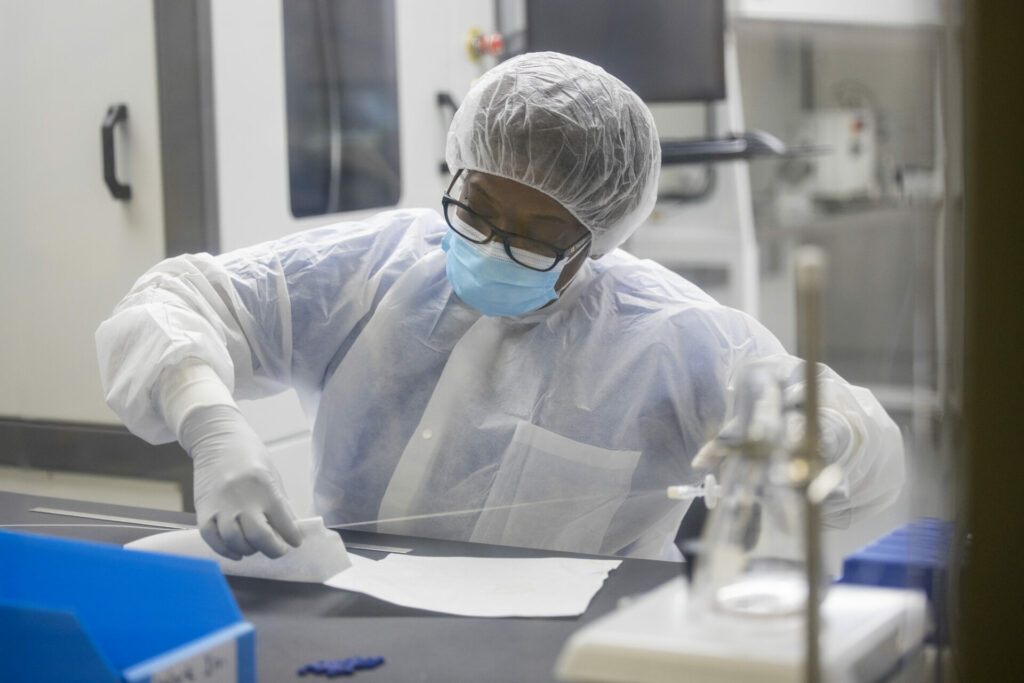If you play an active role in the world of sterile medical devices, you know the challenges the industry has been facing for the last several years. EtO is a hot topic as facilities have been shut down and new regulations have been put in place to significantly reduce emissions. Gamma sterilization is challenged by shortages of the Cobalt-60 used in the process. EtO and Gamma currently serve a majority of the device sterilization market with EtO at just over 50% and Gamma at just under 40%. There are several additional processes that fill the remaining demand such as E-Beam, X-ray, steam, vaporized hydrogen peroxide, chlorine dioxide, and others.
Which option is best for your program(s)? That question deserves a deep dive into a complex story problem.
Selecting the Process
There are many factors to consider and questions to answer when determining which sterilization method is best for your products. See below for examples:
-
- Production volumes. The optimum sterilization method may depend on your annual production volumes. Certain processes lend themselves to lower volume production runs while others are more effective at high volumes. An example of this is EtO sterilization that utilizes large chambers (high volume) vs EtO sterilization performed using what is known as “Bag Sterilization” (low volume).
-
- Materials. While selecting a sterilization method, it is critical to understand how the materials used in your product will interact with the process. Certain plastics can discolor when exposed to Gamma radiation. For example, polycarbonate can turn yellow-green when exposed to Gamma radiation.
-
- Design. The product design, shape, and complexity can also drive which sterilization method is ideal. For example, a complex assembly with internal passages/channels may be difficult for EtO gas to penetrate into for complete sterilization.
-
- Packaging. Packaging materials and packaging design can affect your decisions when selecting the optimum sterilization method. Many products require impermeable packaging, like foil pouches, or rigid trays with foil lids. In these cases, assuming the materials are compatible, Gamma radiation is often preferred. EtO is not a feasible choice as the gas is unable to penetrate through the packaging and sterilize the product.
-
- Other Factors. There are a number of other factors to consider when selecting a sterilization method. Some of these include; cost, capacity, and logistics.
Once all of the pertinent factors have been evaluated and the ideal process has been selected, the next step is validating the process to ensure your product properly sterilized and is safe and effective for use in the field.
Validating the Process
The steps required to validate a sterilization process for your product vary depending on the sterilization process you have chosen. For a given process, there are also specific standards that apply. The list below provides a few guidelines to consider when embarking on the sterilization validation journey:
-
- Engage an expert. Validating a sterilization cycle is no small feat. It can be costly, and take several months to complete. To help ensure success, include an expert (or several) in the field. The skillsets and experience include; a microbiologists, an engineering resource with tribal knowledge of sterilization, a regulatory consultant that is current with sterilization standards.
-
- Create a robust Protocol. The validation protocol drives everything. It is critical to make sure that the protocol is detailed, compliant, and includes detailed work instructions with clear visuals and cycle parameters. If dunnage is required, ensure that the materials and configuration are clearly defined as well.
-
- Execute. While conducting the validation work, double check all products, pallets, dunnage, biological indicators (and their placement) prior to running a cycle. You’ve invested significant time and money at this point and it is worth extra diligence in confirming everything is set up as the protocol has defined.
-
- Test. There are a number of tests that are required throughout the validation process. These steps vary depending on the process you have chosen. A few of these tests include; sterility, residual, and bioburden.
-
- Report. The work is complete and its time to document the recorded parameters during each step and summarize the results. A complete, detailed report is a critical final step in the validation process. The report should follow the guidelines and outline provided in the protocol and include all of the data collected during the effort.
Keeping it Current
The work is not over… Standards require periodic review, testing, and re-certification of your sterilization process. The details are driven by the specific process and the applicable standards provide clear guidelines for what needs to be done and at what periodic frequency.
It goes without saying that ensuring sterility (and acceptable residuals) is of utmost importance to the end user: the patient. Given this criticality, as you continue to utilize your cycle for years to come, it is key to make sure it is safe and effective.
Trending
As a final note and recommendation: Stay proactive in researching current trends in the sterilization industry. With the “hot” landscape around the two primary sterilization methods (EtO and Gamma), it is worthwhile to stay apprised of how these methods are evolving, and how new methods are advancing to fill future needs.
